#pope pius xii
Photo
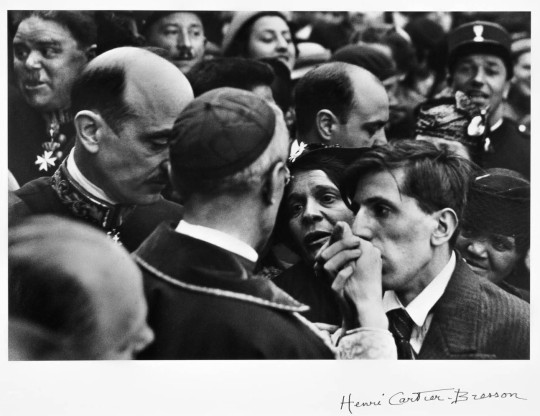
Henri Cartier-Bresson. Cardinal Pacelli, Later Pope Pius XII. Montmartre, Paris. 1938
I Am Collective Memories • Follow me, — says Visual Ratatosk
#BW#Black and White#Preto e Branco#Noir et Blanc#黒と白#Schwarzweiß#retro#vintage#Henri Cartier-Bresson#Cardinal Pacelli#Pope Pius XII#Montmartre#Paris#1938#1930s#30s#history#historico#histoire#história#Geschichte#記録#史籍#由来#historia#histórico#historyczny#역사#역사적#歷史,歷史
40 notes
·
View notes
Text

VenerablePope Pius XII
1876-1958
Feast Day: October 9
Papacy: 1939-1958
Motto: Opus Justitiae Pax
Eugenio Pacelli was born to an Italian family and served the church in many roles including Apostolic Nuncio to Bavaria. His diplomatic style was to be cautious and impartial drafting concordant (a Papal agreement aimed at preserving the Church’s privileges and freedom of action within a country) instead of confrontation. In 1939, he was elected pope and took the name, Pius XII. His papacy, covering the time of WWII and the communist cold war, was tumultuous and controversial. He sought to avoid brutal reprisals, yet saved thousands of Jews. (more than any government) In 1950, he solemnly declared that Mary was assumed into heaven, body, and soul. This is a belief held by the Church from the beginning.
Prints, plaques & holy cards available for purchase here: (website)
63 notes
·
View notes
Text

Saint Maurice (also Moritz, Morris, or Mauritius; Coptic: Ⲁⲃⲃⲁ Ⲙⲱⲣⲓⲥ) was an Egyptian military leader who headed the legendary Theban Legion of Rome in the 3rd century, and is one of the favorite and most widely venerated saints of that martyred group. He is the patron saint of several professions, locales, and kingdoms.
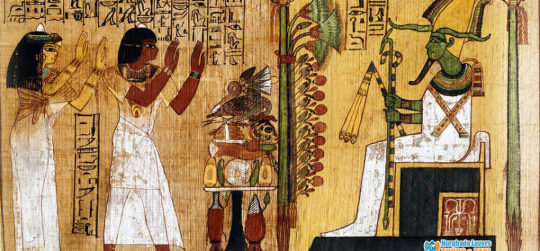
According to the hagiographical material, Maurice was an Egyptian, born in AD 250 in Thebes, an ancient city in Upper Egypt that was the capital of the New Kingdom of Egypt (1575-1069 BC). He was brought up in the region of Thebes (Luxor).
Maurice became a soldier in the Roman army. He rose through the ranks until he became the commander of the Theban legion, thus leading approximately a thousand men. He was an acknowledged Christian at a time when early Christianity was considered to be a threat to the Roman Empire. Yet, he moved easily within the pagan society of his day.
The legion, entirely composed of Christians, had been called from Thebes in Egypt to Gaul to assist Emperor Maximian in defeating a revolt by the bagaudae. The Theban Legion was dispatched with orders to clear the Great St Bernard Pass across the Alps. Before going into battle, they were instructed to offer sacrifices to the pagan gods and pay homage to the emperor. Maurice pledged his men's military allegiance to Rome. He stated that service to God superseded all else. He said that to engage in wanton slaughter was inconceivable to Christian soldiers. He and his men refused to worship Roman deities

Martyrdom
However, when Maximian ordered them to harass some local Christians, they refused. Ordering the unit to be punished, Maximian had every tenth soldier killed, a military punishment known as decimation. More orders followed, the men refused compliance as encouraged by Maurice, and a second decimation was ordered. In response to the Theban Christians' refusal to attack fellow Christians, Maximian ordered all the remaining members of his legion to be executed. The place in Switzerland where this occurred, known as Agaunum, is now Saint-Maurice, Switzerland, site of the Abbey of St. Maurice.
So reads the earliest account of their martyrdom, contained in the public letter which Bishop Eucherius of Lyon (c. 434–450), addressed to his fellow bishop, Salvius. Alternative versions have the legion refusing Maximian's orders only after discovering innocent Christians had inhabited a town they had just destroyed, or that the emperor had them executed when they refused to sacrifice to the Roman gods.
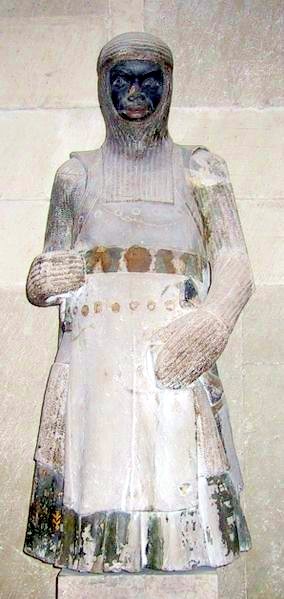
Veneration
Saint Maurice became a patron saint of the German Holy Roman Emperors. In 926, Henry the Fowler (919–936), even ceded the present Swiss canton of Aargau to the abbey, in return for Maurice's lance, sword and spurs. The sword and spurs of Saint Maurice were part of the regalia used at coronations of the Austro-Hungarian emperors until 1916, and among the most important insignia of the imperial throne (although the actual sword dates from the 12th Century). In addition, some of the emperors were anointed before the Altar of Saint Maurice at St. Peter's Basilica. In 929, Henry the Fowler held a royal court gathering (Reichsversammlung) at Magdeburg. At the same time the Mauritius Kloster in honor of Maurice was founded. In 961, Otto I, Holy Roman Emperor, was building and enriching Magdeburg Cathedral, which he intended for his own tomb. To that end,
in the year 961 of the Incarnation and in the 25th year of his reign, in the presence of all of the nobility, on the vigil of Christmas, the body of St. Maurice was conveyed to him at Regensburg along with the bodies of some of the saint's companions and portions of other saints. Having been sent to Magdeburg, these relics were received with great honour by a gathering of the entire populace of the city and of their fellow countrymen. They are still venerated there, to the salvation of the homeland.
Maurice is traditionally depicted in full armor, in Italy emblazoned with a red cross. In folk culture he has become connected with the legend of the Holy Lance, which he is supposed to have carried into battle; his name is engraved on the Holy Lance of Vienna, one of several relics claimed as the spear that pierced Jesus' side on the cross. Saint Maurice gives his name to the town St. Moritz as well as to numerous places called Saint-Maurice in French speaking countries. The Indian Ocean island state of Mauritius was named after Maurice, Prince of Orange, and not directly after Maurice himself.
Over 650 religious foundations dedicated to Saint Maurice can be found in France and other European countries. In Switzerland alone, seven churches or altars in Aargau, six in the Canton of Lucerne, four in the Canton of Solothurn, and one in Appenzell Innerrhoden can be found (in fact, his feast day is a cantonal holiday in Appenzell Innerrhoden).Particularly notable among these are the Church and Abbey of Saint-Maurice-en-Valais, the Church of Saint Moritz in the Engadin, and the Monastery Chapel of Einsiedeln Abbey, where his name continues to be greatly revered. Several orders of chivalry were established in his honor as well, including the Order of the Golden Fleece, Order of Saints Maurice and Lazarus, and the Order of Saint Maurice. Additionally, fifty-two towns and villages in France have been named in his honor.
Maurice was also the patron saint of a Catholic parish and church in the 9th Ward of New Orleans and including part of the town of Arabi in St. Bernard Parish. The church was constructed in 1856, but was devastated by the winds and flood waters of Hurricane Katrina on 29 August 2005; the copper-plated steeple was blown off the building. The church was subsequently deconsecrated in 2008, and the local diocese put it up for sale in 2011. By 2014, a local attorney had purchased the property for a local arts organization, after which the building served as both an arts venue and the worship space for a Baptist church that had been displaced following the hurricane.
On 19 July 1941, Pope Pius XII declared Saint Maurice to be patron Saint of the Italian Army's Alpini (mountain infantry corps). The Alpini have celebrated Maurice's feast every year since then.
The Synaxarium of the Coptic Orthodox Church of Alexandria does not mention Saint Maurice, although there are several Coptic churches named for him.
#african#deep reddish brown skin#north african#coptic#coptic orthodox#alexandria#catholic#roma#roman#gaul#saint maurice#moors#morr#moor#pope#pope pius xii#new orleans#south#south side#baptist#churc#church#egyptian#egypt#kemet#ta meri
196 notes
·
View notes
Text
“When churches are closed, when the Image of the Crucified is taken from the schools, the family remains the providential and, in a certain sense, impregnable refuge of Christian life.”
- Pope Pius XII, Summi Pontificatus
41 notes
·
View notes
Text
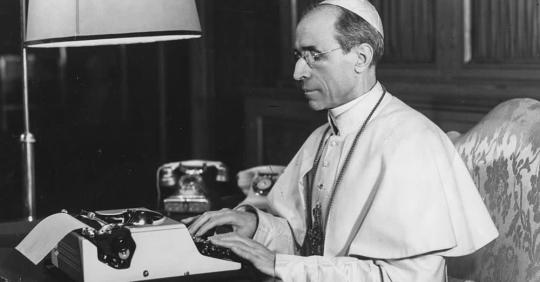
"This man's blind eye to the genocide of our people has been known for over 50 years.
It caused my late father, an Auschwitz survivor, enormous anguish in the 1960's when books were published defending his inaction or even suggesting that he saved over half a million of our people."
Zalmi Unsdorfer
Pope Pius may have known about Nazi gas chambers as early as 1942 camps Jews in Holocaust
A newly released letter indicates the head of the Catholic Church may have known about Nazi death camps earlier than previously thought.
Pope Pius XII may have known about Nazi Germany’s attempt to exterminate Jews in the Holocaust as early as 1942, according to a newly released Vatican letter.
The letter, dated December 14, 1942, was written by Father Lother Koenig, a Jesuit who was in the anti-Nazi resistance in Germany, and addressed to the pope's personal secretary at the Vatican, Father Robert Leiber, also a German.
Koenig tells Leiber in the letter that sources had confirmed around 6,000 Poles and Jews a day were being killed in "SS-furnaces" at the Belzec camp near Rava-Ruska, which was then part of German-occupied Poland and is now in western Ukraine.
The typewritten letter also made reference to Auschwitz and Dachau, two other Nazi concentration camps.
The letter is highly significant because of the date of Koenig's letter. The correspondence arrived in Pius' office in the days after the ghetto in Rava-Ruska was emptied between December 7 and 11, 1942.
The letter was also discovered by an in-house Vatican archivist and made public with the engagement of Holy See officials.
It can't be certain that Pius saw the letter however Leiber was Pius' top aide and had served the pope when he was the Vatican's ambassador to Germany during the 1920s, suggesting a close working relationship especially concerning matters related to Germany.
Vatican archivist Giovanni Coco told Italian newspaper Corriere the importance of the letter was "enormous, a unique case" because it showed the Vatican had information that labour camps were actually death factories.
He added: “The newness and importance of this document derives from a fact: now we have the certainty that the Catholic Church in Germany sent Pius XII exact and detailed news about the crimes that were being perpetrated against the Jews.”
Asked by the Corriere interviewer if the letter showed that Pius knew, Coco said: "Yes, and not only from then."
The letter, according to Coco, was only recently handed over to the central archives where he works.
Supporters of Pius say he worked behind the scenes to help Jews and did not speak out in order to prevent worsening the situation for Catholics in Nazi-occupied Europe.
However, his detractors say he lacked the courage to speak out on information he had despite pleas from Allied powers fighting Germany.
30 notes
·
View notes
Text
Big Bang
“In the beginning God created the heaven and the earth.”
That’s how the Bible, the first chapter of Genesis (and today’s first reading), starts. With the account of Creation.
For many people, this is a reason to doubt or discard the Faith right out of the gate. Because of science. Specifically, the Big Bang Theory.
Which, as Catholic clergy, I find hilarious.
Because that whole line of thinking is based on the assumption that the Biblical account of Creation is a literal account of how it all happened.
It’s not.
The signals telling us that it’s not a literal account? They’re right there in the book of Genesis.
One clue? The sweeping, poetic language of the first account of Creation. It’s radically different from the parts of Genesis (and the rest of the Bible) that clearly are literal accounts.
The more obvious clue? The appearance of a second, very different account of Creation in the very next chapter.
Which means? Understanding it as a literal account of Creation requires a very badly informed reading of the Bible.
But what about the Big Bang Theory?
The Big Bang Theory was developed in 1931 by Georges Lemaitre, a theoretical physicist (PhD from MIT). An astronomer. And a Catholic priest.
Fr. Lemaitre posited the Big Bang Theory as an explanation of the observable mechanics of the universe. And nothing more.
When Pope Pius XII wanted to call it “scientific validation of the Catholic faith” because it pointed to a moment of Creation, Fr. Lemaitre said (in physicist language) please don’t, the Big Bang Theory doesn’t speak to first causes.
Before the Big Bang Theory was misrepresented by the Internet it was misrepresented by a Pope.
Inserting first causes of any kind (pro-God or anti-God) into the Big Bang Theory requires a very badly informed reading of the Theory.
Why is arguing the Big Bang Theory against the Faith is hilarious? Because you’re telling people that you don’t read things for yourself without saying that you don’t read things for yourself.
Well, if it isn’t a literal account of Creation, then what’s the point? Why is it the very first thing in the Bible?
The accounts of Creation (both of them) are meant to be read together. That’s why both of them are there. To give us a clear picture of who God is. And who we are.
The “why” of the cosmic sweep of the first account of Creation is answered in the intimacy of God walking in the Garden with the first people in the second account.
Revealing the heart of God. And this central truth.
Our lives find their ground – and their fullest expression – in our relationship with God.
Today’s Readings
#Big Bang Theory#Creation#God#Jesus#Catholic#Christian#Church#Science#Sciencism#Georges Lemaitre#Pope Pius XII#Genesis#Literal#Moments Before Mass
44 notes
·
View notes
Text
A Nation Must be Religious
6. There must, then, be a return to Christian principles if we are to establish a society that is strong, just, and equitable. It is a harmful and reckless policy to do battle with Christianity, for God guarantees, and history testifies, that she shall exist forever. Everyone should realize that a nation cannot be well organized or well ordered without religion.
Pope Pius XII, Meminisse Iuvat, 1958
11 notes
·
View notes
Text



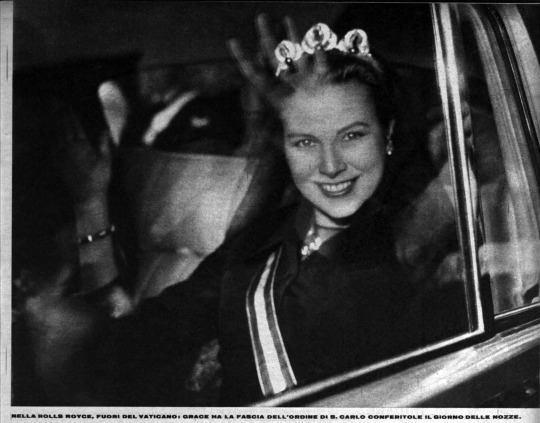
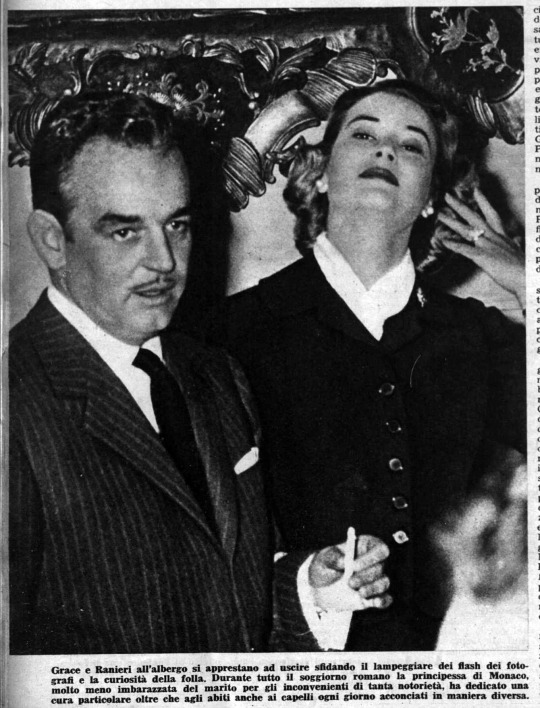

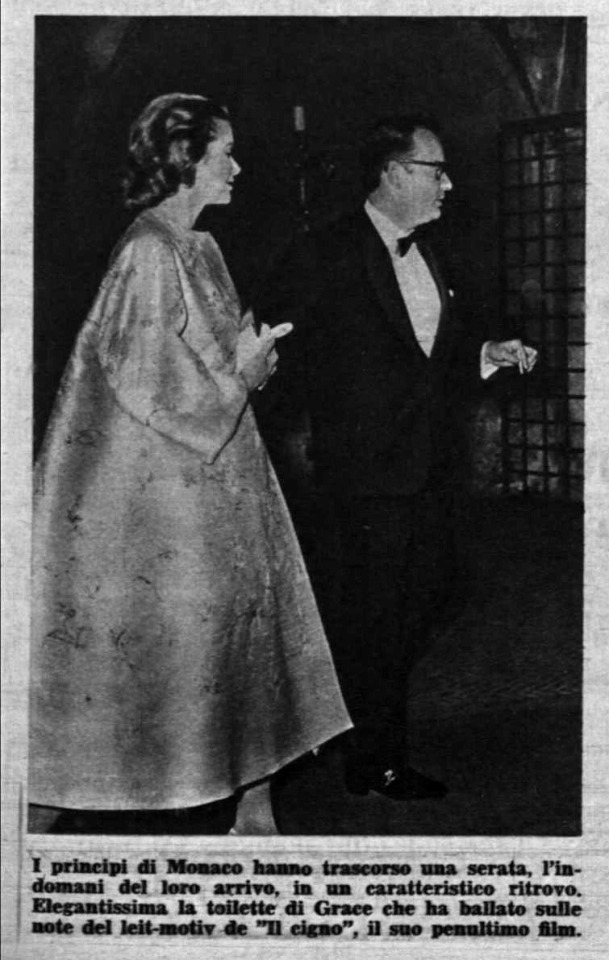
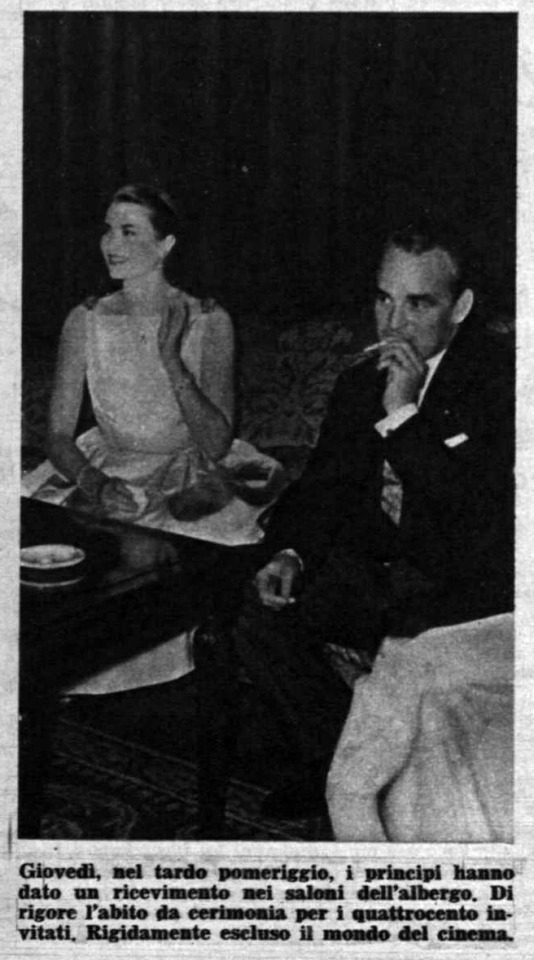

Tempo (May 16, 1957)
5 notes
·
View notes
Text
Tumblr brainrot has me writing a whole essay in response to someone's Facebook repost juxtaposing Pope Francis's "rigidity doesn't leave room for the Holy Spirit" with Pope Pius XII's "those who accuse the Church of rigidity are false prophets" quotes
(Spoiler: THEY'RE NOT TALKING ABOUT THE SAME THING, read the original contexts!!!)
10 notes
·
View notes
Text

2 notes
·
View notes
Text
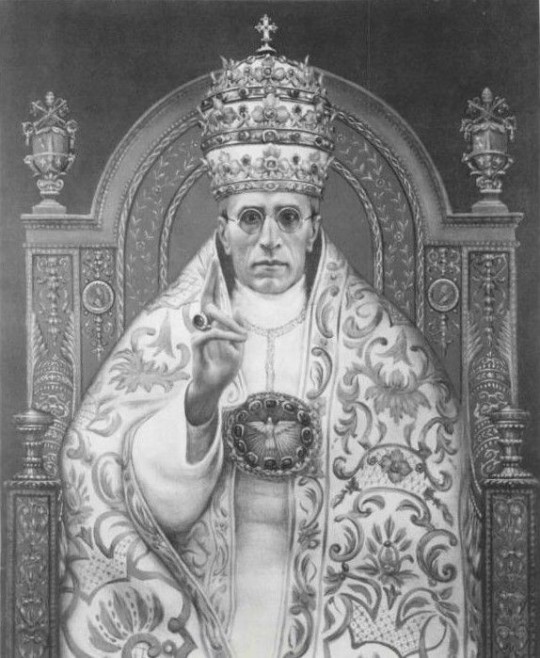
A excellent drawing of Pope Pius XII.
#traditional catholicism#traditional catholic images#traditional catholic modern art#traditional catholic popes#pope pius xii#pre vatican ii council catholism#pre vatican ii council images
8 notes
·
View notes
Photo

Happy Feast Day
Venerable Pope Pius XII
1876-1958
Feast Day: October 9
Papacy: 1939-1958
Motto: Opus Justitiae Pax(The work of justice and peace)
Eugenio Pacelli was born to an Italian family and served the church in many roles including Apostolic Nuncio to Bavaria. His diplomatic style was to be cautious and impartial drafting concordant (a Papal agreement aimed at preserving the Church’s privileges and freedom of action within a country) instead of confrontation. In 1939, he was elected pope and took the name, Pius XII. His papacy, covering the time of WWII and the communist cold war, was tumultuous and controversial. He sought to avoid brutal reprisals, yet saved thousands of Jews. (more than any government) In 1950, he solemnly declared that Mary was assumed into heaven, body, and soul. This is a belief held by the Church from the beginning.
{website}
61 notes
·
View notes
Text
19 notes
·
View notes
Text
“Whoever lives by the spirit of Christ refuses to let himself be beaten down by the difficulties which oppose him, but on the contrary feels himself impelled to work with all his strength and with the fullest confidence in God. He does not draw back before the straits and the necessities of the moment but faces their severity ready to give aid with that love which flees no sacrifice, is stronger than death, and will not be quenched by the rushing waters of tribulation.”
- Pope Pius XII, Summi Pontificatus
28 notes
·
View notes
Text
"The Church has, therefore, in common with the Word Incarnate, the aim, the obligation, and the function of teaching all men the truth, of governing and directing them aright, of offering to God the pleasing and acceptable sacrifice."
From: Pope Pius XII, Mediator Dei, 1947.
#pope pius XII#catholic#mediator dei#the holy sacrifice of the mass#The Church as a perfect; supernatural; and indefectible society#not only has a goal and purpose but is guaranteed to efficaciously reach that goal and fulfill that purpose
4 notes
·
View notes